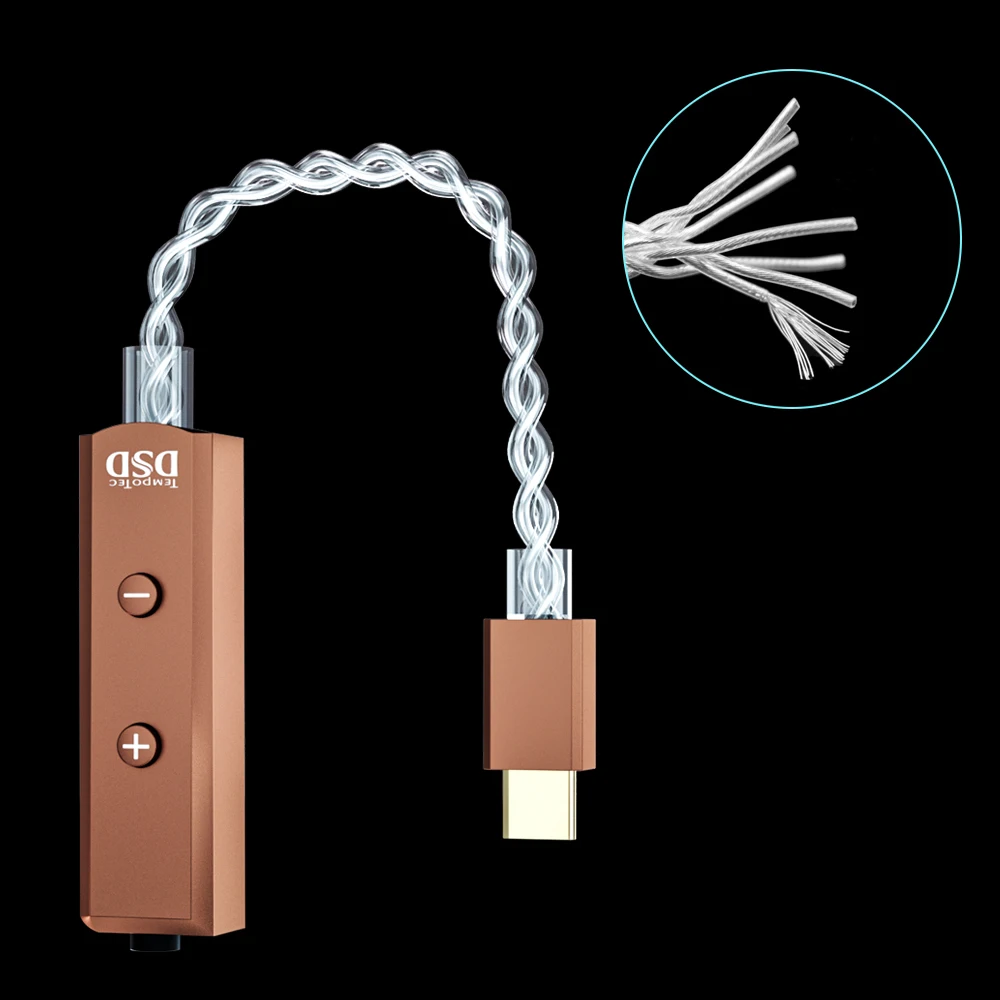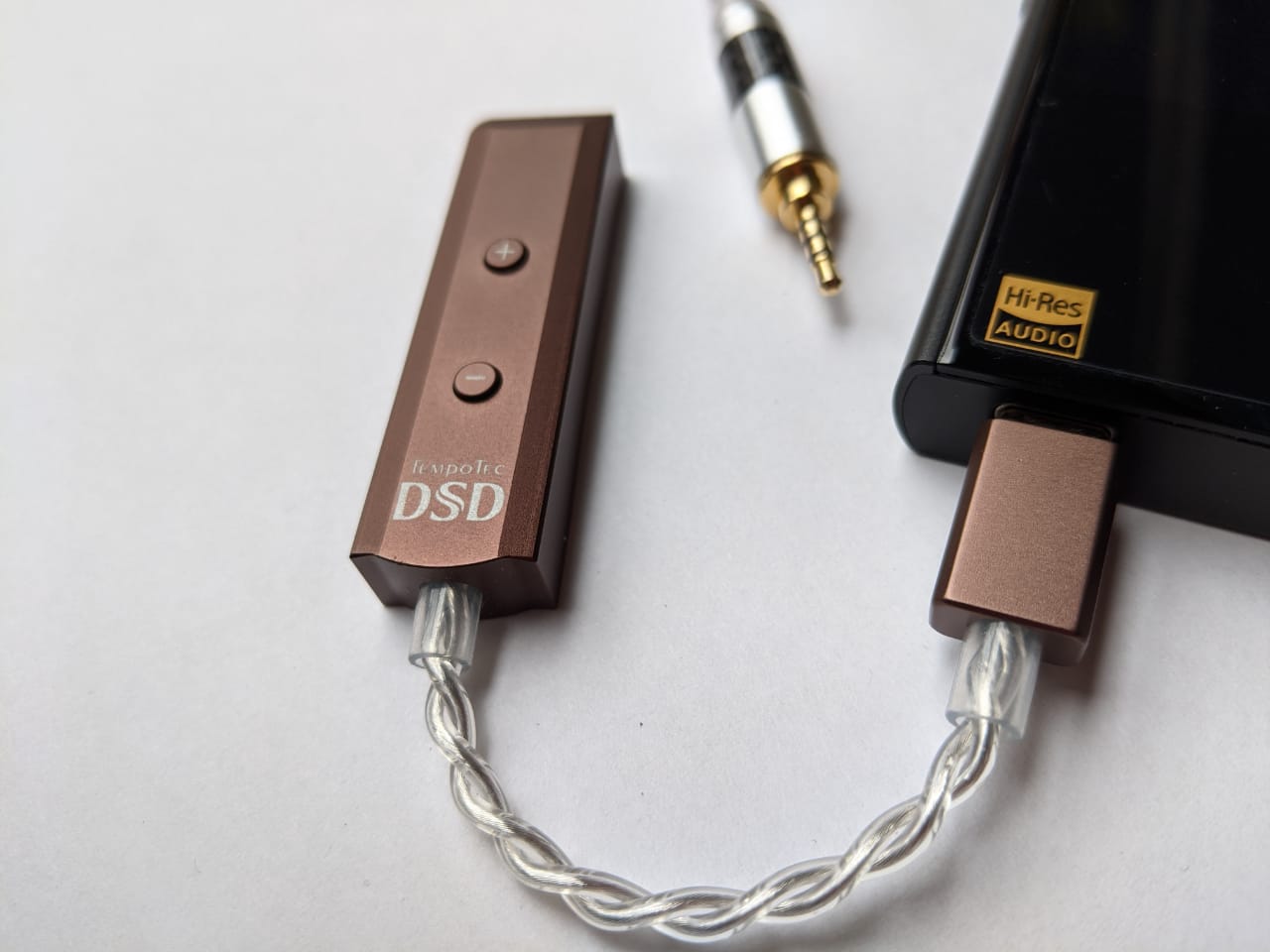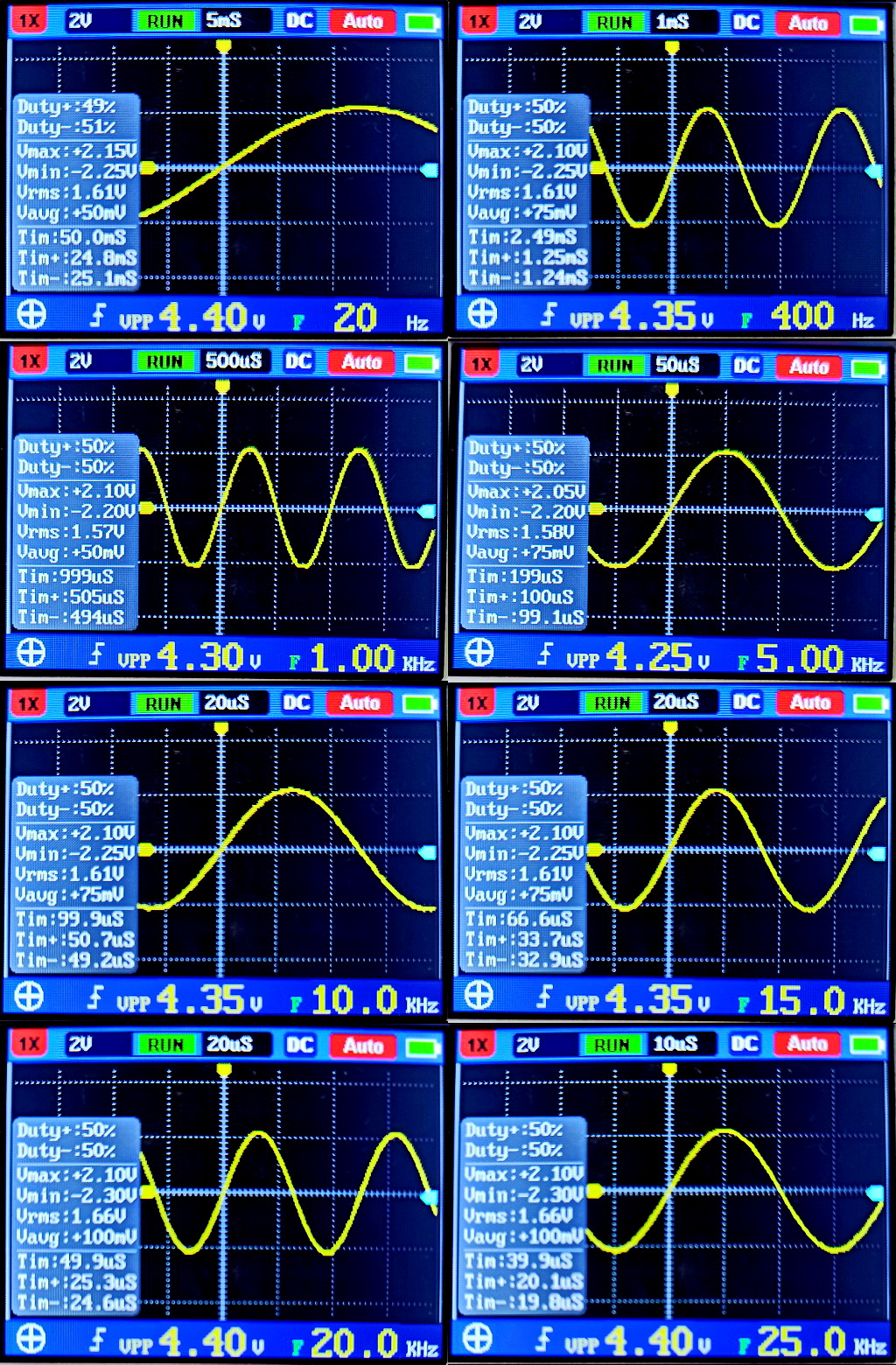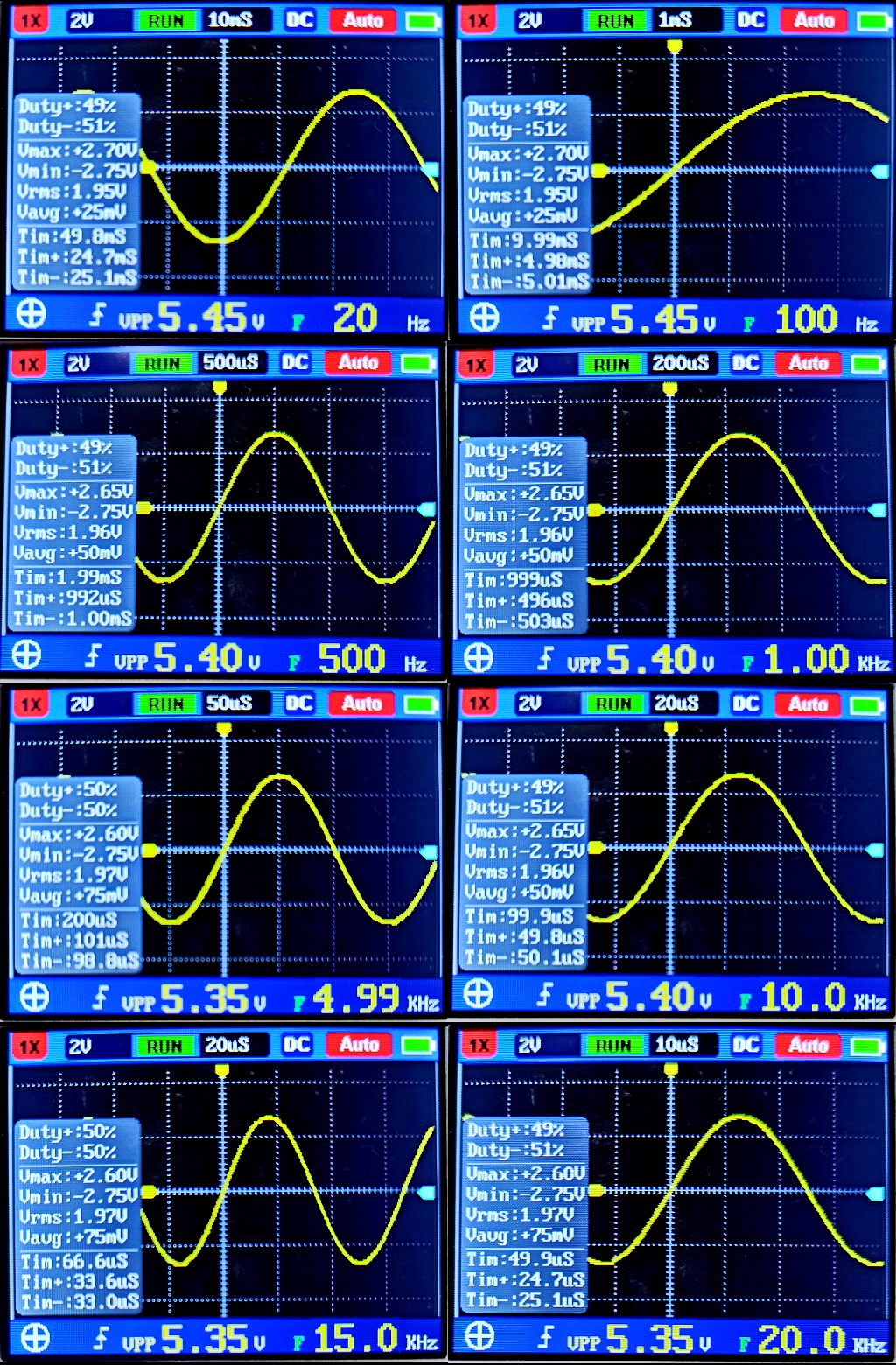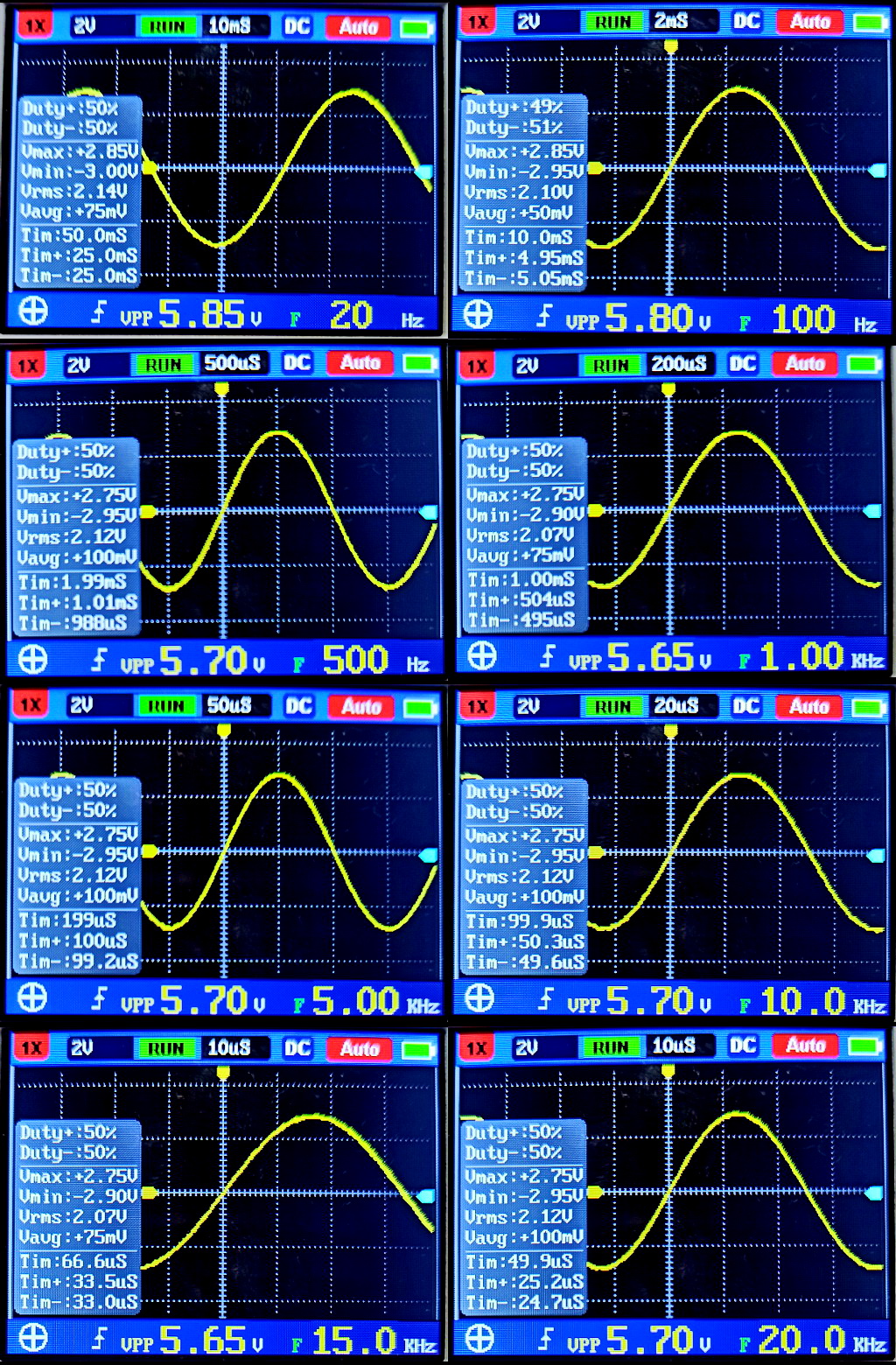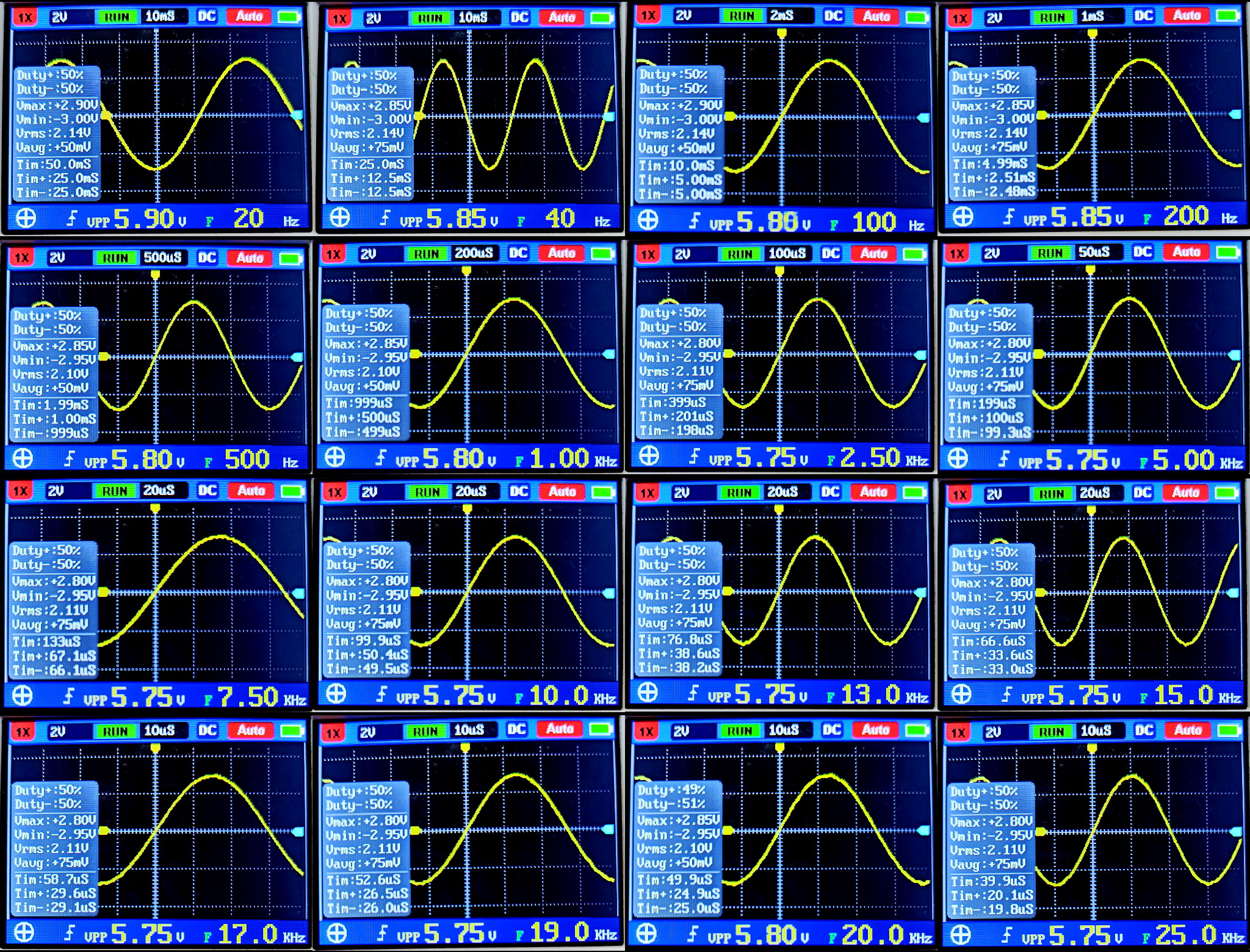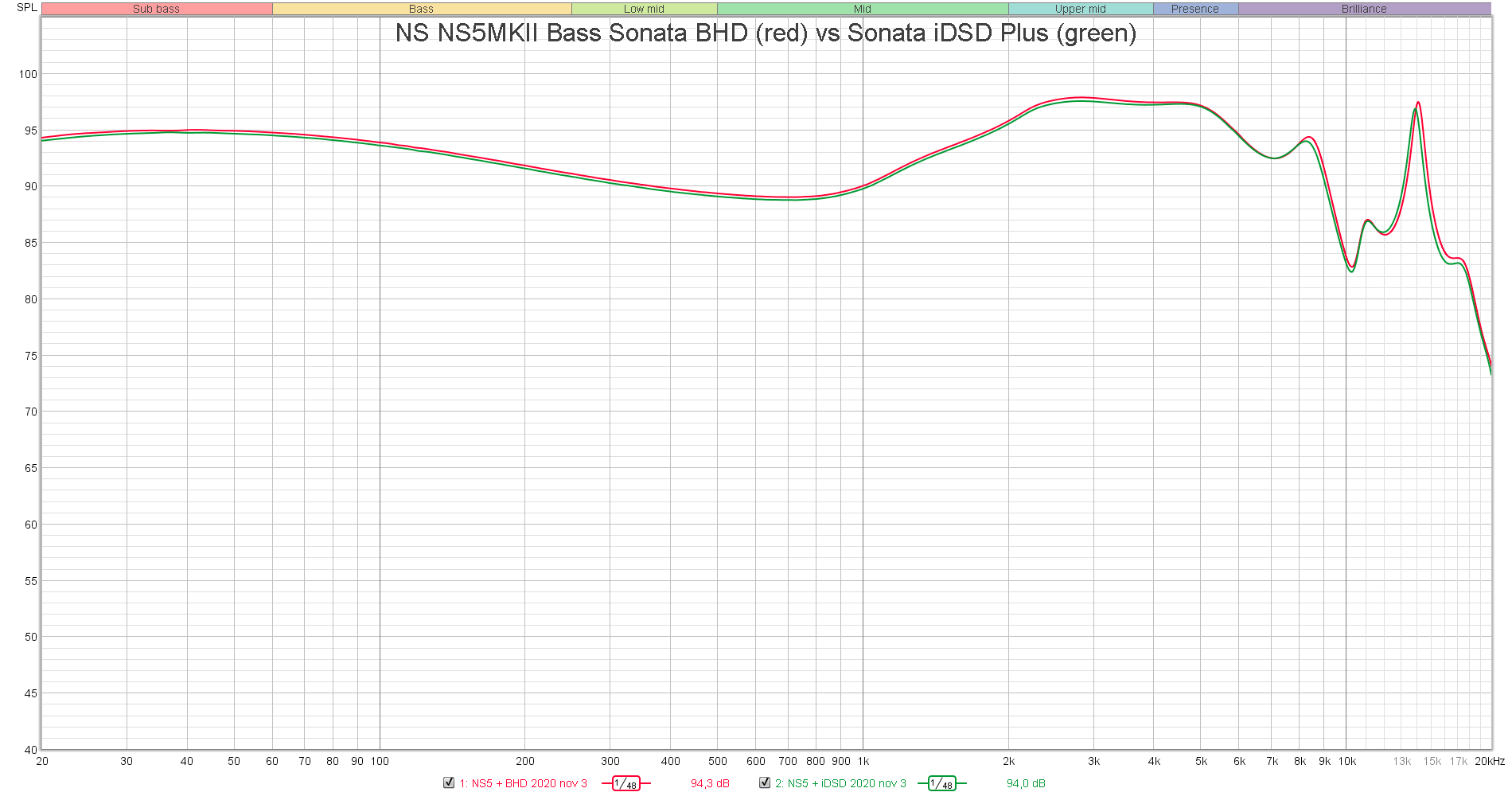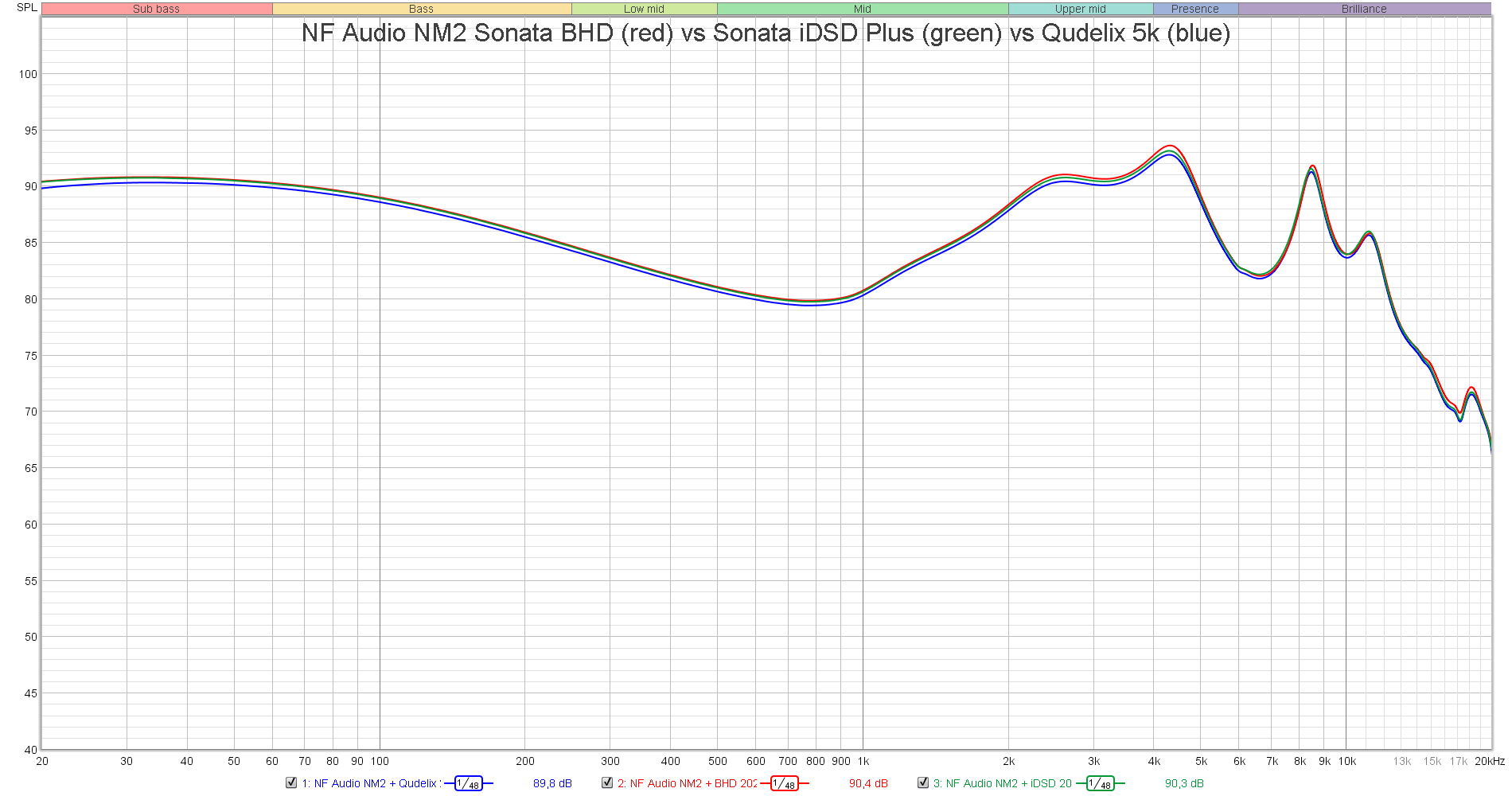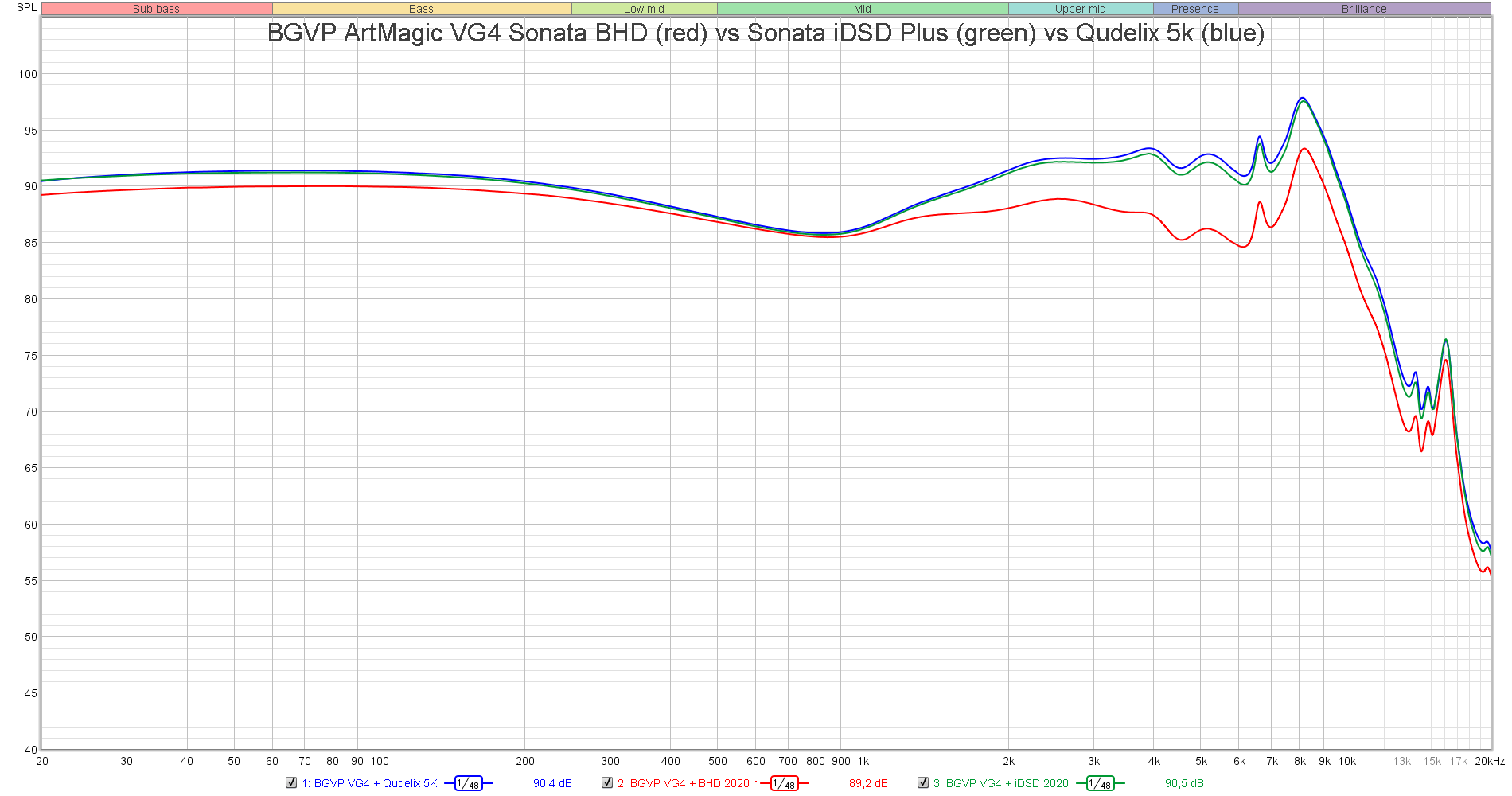Introduction
Tempotec is back in business and has decided to put the balanced output at the best price. Building on the success of the previous Sonata HD Pro dongle, the product has been redesigned to include a Dual DAC CS43131, gaining in both signal-to-noise ratio (129dB) and power (on paper 120mW to 32Ω). This redesign is also noticeable in its external appearance. The new Sonata BHD has a slimmer shape, attractive profiles, smaller volume buttons and a fixed USB Type-C cable, plus a choice of two colours (Black & Coffe Golden). The presentation has also been improved and the transport box looks for the idea of a more exclusive product, well worked, with more care in its forms, packaging and presentation. Next, we will see what this appetizing and small ultra portable DAC/Amp can give.


 Specifications
Specifications
- DAC chip: Dual CS43131
- SNR: 129dB
- Power: 120mW/32 ohm 20mW/600ohms
- Output Level: 2VRMS
- THD + N: -113dB
- PCM: up to 32 bits/384kHz
- DSD: DSD256 (native) DSD128 (DOP)
- Compatible with APP Hiby Music
- PC: exclusive ASIO driver
- Volume control: hardware independent volume control


 Packaging, Content, Construction and Design
Packaging, Content, Construction and Design
The Sonata BHD comes in a small square box, measuring 100.5x100.5x63.5mm. Its colour is very dark grey and there are only silver letters inscribed on it. The box is sealed in transparent cellophane. On the front side, only the words "SONATA BHD", in capital letters and in two lines. On the back side, the model name and the brand name, plus an EAN13 barcode with the model name and the chosen colour, on a white sticker. On the side faces, the brand name alternates with the logo of the brand.
After removing the cover, the product (dongle and USB adapter) can be seen embedded in a thick foam mould, protected by a translucent plastic sheet. First, the foil can be lifted, then the bright golden brown colour of the DAC/AMP can be seen. The mould where it is placed can also be removed to gain access to the second plane of the box: another mould that houses a case, made of soft leather, in light brown. It has a rectangular, polished, silver-coloured metal piece with the logo inscribed in quasi-white ink in its centre. The case is shaped like a bag, with the top and bottom edges completely rounded. Its sides are completely flat. Its interior is textile, black, with a soft surface and very short hair. It contains a small compartment separated by a micro mesh fabric. The interior is spacious, perhaps too bulky, with plenty of room for the BHD. The size of the cover is 65x73x37mm. Counting the contents, it is as follows:
- Sonata BHD
- Transport case
- USB Type C female to USB male adapter
- Gold sticker with Hi-Res AUDIO logo.
The dimensions of the body of the BHD are 54.2x15.2x90.2mm. The length of the cable, including the protective sleeves is approximately 63mm. The USB connector sleeve measures 16x10.8x6.1mm and the connector itself is gold-plated, 6.5mm. The USB Type C female to USB male adapter has a black sleeve measuring 13.2x15x6.9mm. The USB male is not gold plated.
The shape of the dongle is not completely rectangular, but starts from that shape and then rounds off the top left corner. The upper side is not flat, but has bezels on its side and top. The two volume buttons are located in an imaginary central vertical column. Both are round, of the same colour and are marked in white ink. The upper button increases the volume, the lower one decreases it. At the bottom of the product, with the same white ink, you can read "TempoTec DSD", in two lines. The lower edge is not flat, but has a rounded central area. From the inside, the two-stranded, oxygen-free, silver-plated copper wire protrudes. The upper edge is flat and in the centre is the 2.5-mm balanced connector. Below this is an inscription in white ink, indicating the headphone output. The edge of this connector is made of black plastic instead of gold-plated metal. Normally, it is preferable for this connector to be conductive and separate from the chassis. The rear face is completely flat and is fitted very tightly to the chassis, the joint being barely noticeable. The material of the chassis looks like a micro textured aluminium alloy.
The packaging is plain, with an average size that is not superfluous. The components are perfectly packaged and fitted together. The double floor, provides a slight surprise factor, seeing the bottom and its distinguished case. This case is outstanding, perhaps a little thick for transport, but of beautiful workmanship and appreciable quality. The dongle is very light, the cable flexible, but fixed. It is difficult to know whether the cable is integrated or not. In my case, I think that a separate cable would have been better, it could prolong the life of the cable, as long as the connector was of the highest quality. Furthermore, it would have provided additional connectivity, using a cable with the old USB Type B connector. The Type C USB connector is long, gold-plated, protected by an aluminium case, matching the chassis. In contrast, the normal USB adapter is not gold-plated, slightly breaking the gold connection chain.


 Connectivity
Connectivity
The Sonata BHD is compatible with Android, MAC and Windows PC. For Android it is recommended to use the APP HiBy Music. On the Apple computer system the device is Plug & Play, just like on Windows 10. For Windows 7 or 8, you must use the ASIO driver, which can be downloaded here (It is the same as for the Sonata HD Pro):
Driver
The current version is V3.3.136.1
After the installation of these drivers, the PC recognizes the device without problems and can be used with the Foobar2000 and the resolution is up to 32bits/384 kHz.
It can be used with DAPs such as Tempotec Variations V1/ V1-A or HiBy R3 Pro.
As a curiosity, compared to the Sonata HD Pro, the BHD, once connected is already on and does not need to have headphones connected to activate.


 Measures
Measures
The specifications of the Sontata BHD say that the output power to 32Ω is 120mW. According to Ohm's law, this indicates that the voltage needed to provide power should be 1.96V:
As tested with the oscilloscope, with a pure resistance of 32Ω, it can be seen that at maximum volume only 1.63V can be obtained, but with some visible saturation. By lowering the volume slightly, a value of 1.57V can be obtained (the minimum without saturation which can be seen in the following measurements). This gives a real RMS power of 80mW, well below the declared figure.
Measures at 32Ω:
Measures at 100Ω:
Measures at 240Ω:
Measures at 320Ω:
Measures at 620Ω:
Measures with No Load:
The Sonata BHD may not be able to deliver the current needed to reach 2V RMS. This does not happen, as the impedance connected is higher, as the current in that case, decreases. This can be seen when connecting 100Ω, where the value of 1.95V is already assumed for the whole frequency range.
On the other hand, the maximum voltage value is close to 2.14V. Extrapolating, you can see that the voltage that is achieved with 620Ω, rubs it (2.12V). If we apply, again, Ohm's law, the power that can be obtained for 600Ω, would be 7.63mW, far from the 20mW declared for this impedance.
To sum up, there seems to be no advantage in balanced output over the unbalanced HD Pro model, as the maximum output voltage seems the same. Normally the use of a Dual DAC and a real balanced output should lead to a clear increase in voltage, over the unbalanced circuit, which is not the case in this BHD version.
On the other hand, it seems that the output is completely flat, as it can be seen that the voltage measurements are practically the same for the whole frequency range, regardless of the impedance connected.
By analysing the frequency response of several connected IEMS, it can be seen that no disturbances occur in those IEMS whose driver is dynamic.
But, when paired with IEMS with several pure BA drivers, we see that there is a clear coloration above 1kHz, lowering the signal by several dB's. In this way, you can see that the sound will be less bright and noticeably warmer with less sparkle.
Sound
On this occasion, and to my surprise, the BHD moves a bit away from the neutrality offered by Tempotec in other products, getting closer to the sound of the iDSD Serenade, warmer and softer. This is something that can be appreciated mainly, in the IEMS with BA drivers, but it can also be heard, in the dynamic drivers. Compared to other balanced outputs, the presence of the low end stands out as a first impression, providing noticeable and powerful bass, but perhaps less laminated and more rounded. This makes the texture not so explicit, but smoother, softer, but less descriptive. The sub-bass is not so deep, it is observed that the mid-bass has more prominence, hence the area feels more rounded than flat. In spite of this, the speed is quite ideal, without the bass feeling swollen, too wide or stretched towards the mids. In short, I think that the virtue of the zone is in the hitting: powerful, compact and contained.
In the midrange there is a direct version, slightly warm, but well profiled, with good immediacy, presence, body and speed, without the details having much time to show off, due to the more explosive energy of sound. The mids are not abrupt, because there is a good technical level that allows them to be expressed naturally and realistically, but the resolution is not that of a clearly analytical product, but more musical and compact, clean, effective and vivid. I want to emphasize the effectiveness of the sound in the middle zone: it is not a sound that walks around the branches, nor does it get lost in the micro nuances, but the presentation tries to show all that it can in the smaller possible time, but without a glimpse of clumping, nor limitation. It is as if BHD were trying to say: "this is what there is", but without being haughty or challenging, but clear and sincere. But it is the sincerity of a good friend, who does not try to deceive, nor to mask by offering a grandiloquent sound, but more affectionate and sober, but well executed. He may not be able to push your best IEMS to the limit, but he will not disappoint you because there is no evil in his sound, nor a vain showiness.
At this point, the treble follows, perhaps the least exposed area of the entire range. It is felt that both the mid and low ranges are a quarter of the way ahead of the high range, and that is true. And, as an alternative, it is not bad at all. The sound is warm, more because it is enhanced in the low and middle zone, than because it is soft or dark. In fact, I don't find anything dark about the BHD, as its energy level and direct sound sensation prevents it. The high notes are very musical, far from the analytical sensation. Moreover, even with the coldest headphones, it is able to tame them, without sounding unrealistic or abruptly nuanced. Alone, it is a more domesticated sound, which presents the treble clearly, but looking for a kinder and more natural sound, which is extremely polished, fine, ultra precise and defined. On the other hand, the extension of the high zone is not touched and the existing air is not cut. In this way the separation looks quite good, there being a good differentiation between notes, as well as a clearly observable space. However, the scene is not projected as much as I had imagined, for a balanced output Dual DAC. It is also true that this product is quite cheap and cannot be compared in any way with other devices that are twice as expensive. In this way, the scene is perceived with good width, with a somewhat more limited depth and a lower height. The result is a compact, airy, but collected scene. The level of resolution and refinement is something else that must be taken into account, evaluating the device in its correct measure. I have spoken about the sound being presented directly and that is something that is demonstrated when speaking in those terms. The descriptive capacity has a very appropriate level, but it is true that the sound has an immediacy that limits this process of expansion of detail and the drawing of a more delicate and comprehensive melody. In return, the sound produced is clearly energetic, powerful, becoming hard, if the volume is exceeded. The fun factor and musicality are valued more than a more precise and decisive profile. In this way, the BHD is very well matched to those IEMS that are colder or neutral, as it allows a more pleasant side to be drawn from them, giving a plus in the low zone and rounder and wider mids, making the high frequencies much more digestible, even in long sessions.


 Comparisons
Comparisons
Tempotec Sonata iDSD Plus
The sound profile is different on both balanced outputs. The BHD has a more emphasized and energetic low zone. However, the bass reproduction in the iDSD is more natural and detailed, with a more precise and realistic sound. In the BHD, the bass reproduction is more direct, thicker, with a more colourful touch, a more energetic beat, but with a somewhat lower resolution and fidelity. Both the bass and sub-bass frequencies, as well as the different planes, are better recreated in the iDSD, so that their tracking, interpretation and recreation is more obvious and noticeable. The BHD has a tendency to emphasize the mid-bass more, and the iDSD has a more linear bass, with a more noticeable sub-bass separately. The BHD gives the impression of having more speed and is able to generate a more compact bass. The iDSD is not as contained or tight and seems a bit slower, but it is also more complex, with a distinct texture.
With the midrange something similar happens, although, on this occasion, you do not notice that there is an obvious colouring in the BHD, but the differences are established in the descriptive capacity, the level of resolution, the texture and the level of detail. In all these terms, the iDSD is superior to the BHD, producing a richer and sweeter sound. The BHD still shows a simpler feeling, a more contained and immediate sound. Its higher energy level makes it louder at high volumes, where the iDSD is able to hold its own, without losing its musicality and maintaining fidelity and better analytical capabilities.
The BHD's highs are soft and less emphasized, which moves it away from a more defined, precise and resolute profile. The crunching of the high notes is not as clear and vivid as in iDSD, without suggesting a hint of shrillness. Quite the contrary. The level of separation and space that the iDSD is capable of generating, allows its sound to be clearly wider and more separate, showing more gaps and emptiness, decongesting the scene to a higher level. This is the big difference between the two products: the BHD has a more compact, energetic, tighter and less defined sound. While the iDSD has a more ethereal, spacious, separate, volatile and resolving sound. These virtues generate the differences in treble, as well as in scene size and instrumental positioning, which are more defined and precise, despite the volatility of the sound, in iDSD.


 Conclusion
Conclusion
The Tempotec Sonata BHD is a bold bet on a product with a single balanced output. Using the classic CS43131 DAC, this time in a dual configuration, Tempotec has created a new, more attractive design with a fixed cable, a USB Type C connector, for easy connection. Of course, it still includes the volume buttons, compact packaging and an excellent leather case for transport. In terms of sound, the BHD is warm but direct, energetic, immediate and clear. A powerful sound in its lower half and softer in its upper half. Actually, its power is not as high as I expected, given its new configuration. However, this would certainly have penalised higher consumption on the source devices, as they lack internal batteries. Be that as it may, Tempotec offers, with its Sonata BHD, a good balanced output, at the best price.


 Headphones Used During Analysis
Headphones Used During Analysis
- NF AUDIO NM2+
- NF AUDIO NM2
- NS Audio NS5MKII Bass Edition
- Tin HiFi T2 Plus
- BGVP ArtMagic VG4

 Ratings
Ratings
- Construction and Design: 89
- Accessories: 83
- Connectivity: 90
- Sound: 82
- Quality/Price: 91
 Purchase Link
Purchase Link
You can read the full review in Spanish here

